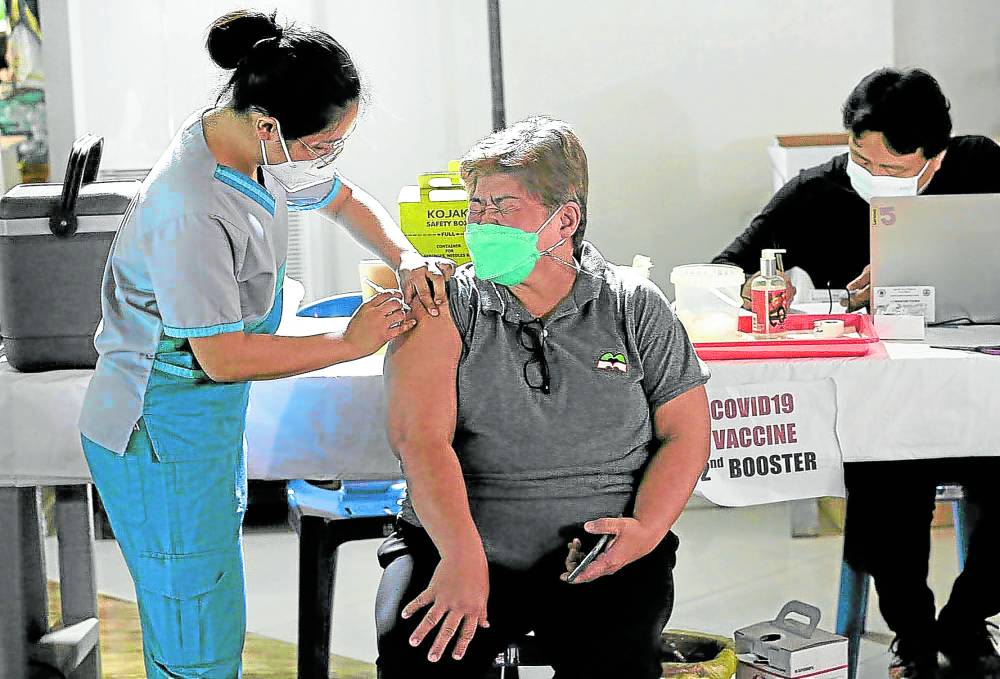
2ND BOOSTER Anabelle Dela Cruz, 61, receives her second booster shot against COVID-19 at Ospital ng Maynila in Manila. —FILE PHOTO
While the country’s daily COVID-19 case count remained below 1,000 for the fourth straight day, infectious diseases specialists warned of a still dismal booster uptake amid the threat of Omicron subvariants that are causing infection spikes in other countries.
According to the COVID-19 tracker of the Department of Health (DOH), 776 new individuals got infected with COVID-19 on Friday, the fourth consecutive day that daily cases remained below the 1,000 mark.
The declining trajectory is far from DOH projections that cases may peak at 18,000 by Nov. 15, or in 10 days, after the detection of more immune-evasive strains.
But US-based infectious diseases specialist Dr. Franco Felizarta warned, in a webinar organized by the University of the Philippine Manila’s National Telehealth Center on Friday, that the country’s caseload may be “10 to 20 percent lower than the real infection rate” because of antigen tests that tend to produce false negatives.
Only 26.4% got 1st booster
Moreover, noted pediatrician and infectious diseases specialist Dr. Anna Ong-Lim, a member of the DOH technical advisory group, said only 26.4 percent of the 78.1 million Filipinos targeted have received their first booster shots, not even half of the government’s first booster target.
“If a variant comes in that has immune evasion and is able to translate to actual clinical diseases, then that would be really concerning, especially here in the Philippines that has a low second booster and first booster coverage,” noted Lim.
In a separate press briefing on Friday, health department chief Maria Rosario Vergeire admitted that the government case tally would not be able to capture all of the cases since there is “underreporting.”
“Antigen tests are still not included in the tracking of cases. Although internally, the DOH is monitoring the use of antigen tests,” she said, adding that the DOH has estimates on the number of antigen tests done per day.
Luckily, global health experts suggest that recent Omicron subvariants were “not as virulent” as the Delta variant, perhaps because of the hybrid immunity of the population, Felizarta said.
Still, Lim called on those with no booster shots to get updated with their COVID-19 jabs in order to have a “complete layer of protection.”
Felizarta said that one of the Omicron subvariants to monitor is the BQ.1, which was found to have a 60 percent growth advantage over its ancestor strain BA.5.BQ.1 and its sublineage BQ.1.1 are causing another surge in cases in the US and are expected to become the dominant variants there.
READ: No law requiring booster shots needed – Bongbong Marcos